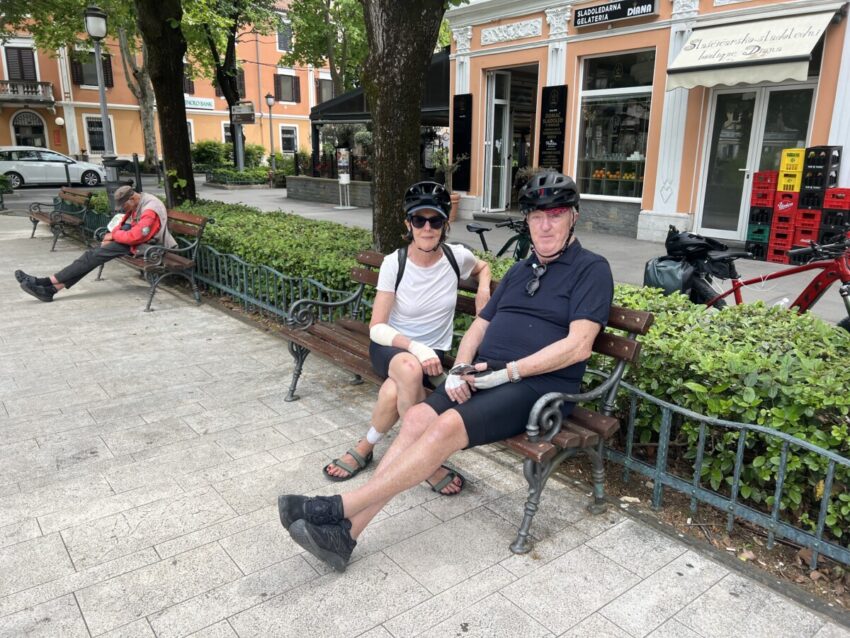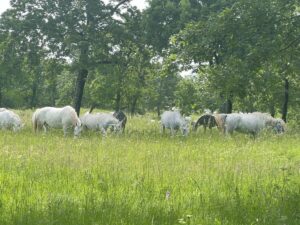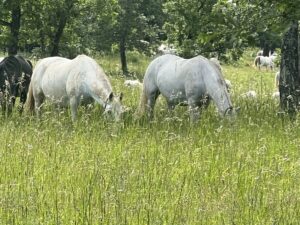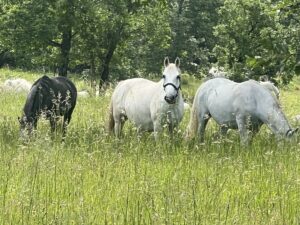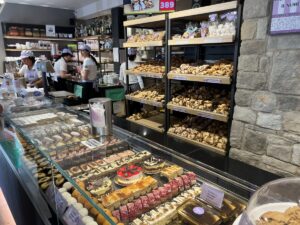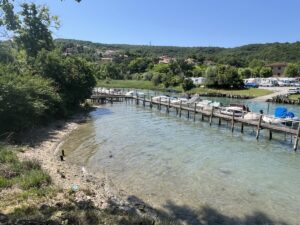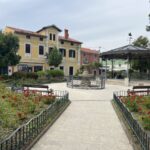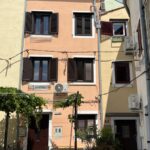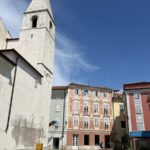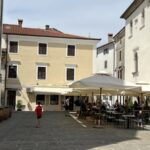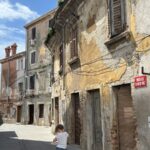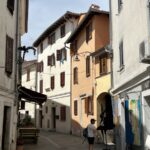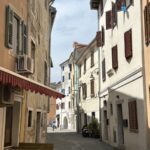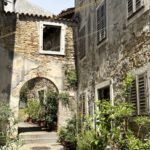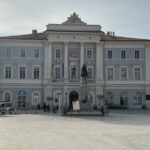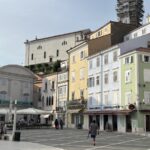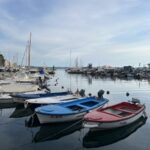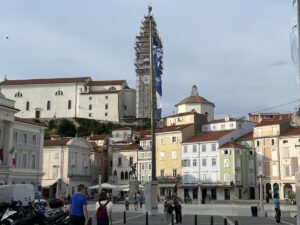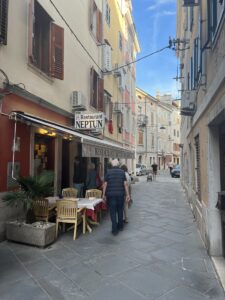Today’s cycle ride took us from Sezana to Piran. It ended up being 61 kms because we did a detour in to the town of Izola which was well worth the visit. We climbed 455 meters and descended 798 meters. We descended the Karst Plateau and headed towards the Adriatic Sea. The landscape was really varied from riding through the beautiful stud farm, on to the lovely village of Bazovica (Basovizza in Italian and the village is in Italy!), and then on to the industrial town of Koper. We encountered rough countryside with road repairs going on as well as cobbled steep paths that we had to cycle slowly along. We left the rolling hills and rode along the coast.
Lipica is a village in the Littoral region of Slovenia and is most famous for the stud farm. Lipica is derived from the Slovenian word lipa or linden tree, a national symbol of Slovenia. It is home to the famous Lipizzaner horses. The stud farm in Lipica has been in operation since 1580, which places it amongst the oldest stud farms in Europe. They used to breed horses for the Viennese royal court. The horses were originally bred white on the orders of Austrian-Hungarian Empress Maria Theresa, but in reality, the Lipizzaner horses are brown or black and turn white later. Another fun fact. Queen Elizabeth 11 was presented with a Lipizzaner as a gift on her only visit to Slovenia!
We crossed the border from Slovenia to Italy and came across this cake shop in the first Italian village we came to. It just happened to coincide with our morning coffee break!
The cycle paths were intermittent and often we ended up on main roads. The Italian drivers are crazy so it was a bit scary! We crossed back into Slovenia and came off a main road outside of Koper onto a cycleway and came across this little marina as seen below.
Slovenia’s coastline lays on the Adriatic Sea, but despite its short length of a little more than 45 kilometres it’s very attractive and every one of the towns along it has a distinctive and different character and layout. And Izola is no exception. It is a romantic little Venetian port town with beautiful old architecture and beautiful nature. Izola is on the Istrian peninsula.
Izola’s old town was actually an island until the early-19th century and that’s where it’s name comes from. In latin, isola means an island. The island was inhabited in the 1st century A.D. In 1253 Izola has declared independence and became a town with its own laws and government. In 1820 thermal springs were discovered here, leading to the town’s earliest forms of tourism. In the 19th century, the fishing industry began to flourish and the first fishing factory along the Adriatic coast was built in the town.
We still had 10kms to cycle once we left Izola. We cycled through the lovely town of Strunjan and then through the Valletta and Salet Tunnels which connect Strunjan to Portoroz and is part of the original Parenzana railway. Parenzana is a cycling route that runs along the Istrian peninsula, passing through Slovenia, Italy and Croatia. The route was originally a narrow-gauge railway that connected Trieste with Polec, but is was abandoned in the 1930s. Today the route has been transformed into a 123-kilometre long cycling trail that winds through picturesque countryside, little villages and stunning coastal vistas.
Our destination for today was Piran and we cycled into Tartini Square in the middle of Piran. Our lovely boutique hotel (Memento B & B) is off the square in a little side street. Piran is an old town with narrow streets, historic buildings, and piazzas that exude the atmosphere of the Venetian Republic. Tartini Square is named after the famous violinist and composer Giuseppe Tartini, born in Piran, and is home to many cafes and restaurants. It is surrounded by colourful Venetian Gothic buildings and is a great place to sit and soak up the atmosphere of this charming seaside town.
We had a lovely meal at Neptune Restaurant, lots of scampi and all of it freshly caught. Interesting to hear the restaurant owner tell us that the area is fished out and due to cruise ships and all the boats in the water there is a lot of rubbish in the sea. As a result it took 5 fishing boats to catch only 3 boxes of the scampi. Such a shame.

